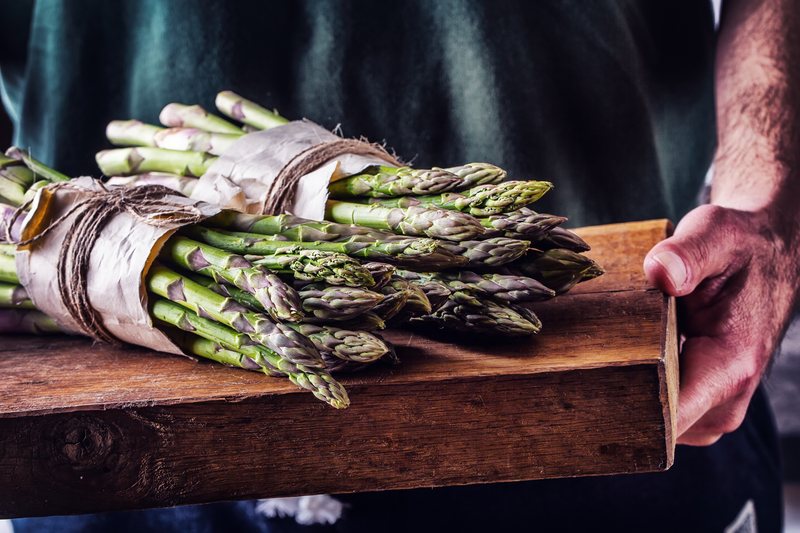Safeguarding Your Garden's Winter Beauty
Posted on 28/05/2025
Safeguarding Your Garden's Winter Beauty: Comprehensive Tips for a Lush Cold-Season Landscape
The winter months can present a unique set of challenges for gardeners hoping to preserve their gardens' aesthetics and vitality. Safeguarding your garden's winter beauty requires a dedicated understanding of plant care, smart landscape planning, and ingenious protection strategies. In this article, we'll take you through the best practices for ensuring your garden maintains its splendor throughout the colder, harsher months. Let's delve into ways to keep your winter landscape thriving and captivating!
Why Protecting Your Garden's Winter Charm Matters
While much of your garden may seem dormant under the cloak of winter, the truth is that many aspects of your garden are alive and vulnerable throughout the season. Taking steps to preserve your winter garden beauty has several benefits:
- Ensures plant health - Proper protection helps perennials, shrubs, and trees survive frost and snow.
- Lowers spring workload - Healthy overwintering plants bounce back stronger, reducing your spring gardening efforts.
- Enhances year-round curb appeal - With thoughtful planning, winter can be a stunning season, full of structure, color, and life.

Understanding Winter's Impact on Your Garden
Winter weather can stress your garden in several ways:
- Frost and freeze damage to plant tissues
- Dehydration from cold, drying winds
- Sudden thawing and refreezing, known as frost heaving, that disrupts plant roots
- Snow and ice load breaking branches and compacting soil
- Winter-hungry pests nibbling bark, roots, and foliage
Protecting your winter landscape begins with recognizing these threats, so you can implement targeted strategies to counter them.
Key Principles for Preserving Your Garden's Winter Beauty
1. Choose the Right Plants
The foundation of a beautiful winter garden starts with plant selection. Opt for cold-hardy varieties known for their structural interest, color, and endurance. Here are a few must-haves to safeguard your winter garden aesthetics:
- Evergreens: Boxwood, holly, juniper, and pine maintain foliage and structure throughout winter.
- Winter-flowering shrubs: Witch hazel, camellias, and winter jasmine bloom in the cold, adding precious color.
- Ornamental grasses: Many varieties retain attractive seed heads and movement even as frost laces their blades.
- Bark-interest trees: Dogwoods, birches, and stewartias often showcase gorgeous bark through winter's months.
Pro tip: Plant in groups and layers for visual depth and enhanced wind protection!
2. Mulching - Nature's Winter Blanket
One of the most effective ways to protect winter garden beauty is mulching. Mulch stabilizes soil temperature, retains moisture, and shields roots from frost.
- Use 2-4 inches of organic mulch (like bark, straw, or shredded leaves) around the base of your plants.
- Keep a small gap around trunks and stems to prevent rot.
- Replenish mulch as needed during thaws when it can decompose or blow away.
Mulching also helps prevent soil erosion and compaction from snow and ice.
3. Watering Wisely in Winter
It's a myth that plants don't need water in winter. Most winter damage happens because cold winds and sun dry out plant tissues while roots can't take up frozen water. Ensuring adequate moisture before the ground freezes is crucial to preserving your landscape's winter charm.
- Water deeply in autumn before the first hard freeze, especially for evergreens and new plantings.
- On mild winter days, water if the soil is dry and not frozen.
- Avoid wetting leaves or stems on cold days to prevent ice damage.
4. Shielding From Wind and Snow Damage
Strong, drying winds and heavy snow can play havoc on your winter garden display. Utilize these tactics to defend your garden's winter appeal:
- Build simple windbreaks with burlap or snow fencing, especially for exposed or newly planted shrubs and perennials.
- Gently brush off accumulated snow from branches using a broom, but avoid shaking ice-covered limbs (they're brittle!).
- Stagger plantings in layers to create natural wind barriers and reduce drift damage.
5. Pruning and Tying for Structural Safety
Winter weather can cause branches to split or break under the weight of ice and snow. Proper pruning helps safeguard your winter landscape beauty by maintaining plant health and form.
- Prune dead or diseased wood in late fall to reduce weak spots.
- Tie together the branches of upright evergreens, such as arborvitae or boxwood, with soft twine to prevent splaying from heavy snow.
- Save major pruning for late winter or early spring to avoid new growth that could be damaged by cold.
Enhancing Winter Garden Beauty: Design Ideas and Features
With protection measures in place, let's explore ways to emphasize your winter garden's visual interest. A carefully designed winter landscape can be as enchanting as any spring garden!
Incorporate Four-Season Plants
- Colorful stems: Red twig dogwood, coral bark maple, and willow varieties add fiery color against snow.
- Berries and fruits: Holly, cotoneaster, and viburnum offer persistent berries that feed wildlife and brighten the garden.
- Texture-rich evergreens: Dwarf conifers, yews, and chamaecyparis bring a variety of textures and shades of green, blue, and gold.
Hardscape for Winter Interest
- Garden art and sculpture: Statues, birdbaths, and sundials become focal points in a pared-down winter garden.
- Paths and edging: Pavers, bricks, or mulch paths provide structure and guide the eye through the landscape.
- Lighting: Solar or low-voltage lighting highlights trees, shrubs, and features, creating magical evening views.
Wildlife-Friendly Features
A winter landscape full of life is even more beautiful. Add elements that invite birds and beneficial insects:
- Install bird feeders, suet cages, and heated water sources.
- Leave seed heads on select perennials like echinacea and black-eyed Susans for food and visual interest.
- Mulch or leaf piles offer winter shelters for pollinators and small mammals.
Common Mistakes to Avoid When Protecting Your Garden's Winter Beauty
- Over-fertilizing in fall: Avoid late-season nitrogen, which can spur tender growth prone to frost damage.
- Neglecting late autumn watering: Dry roots going into winter increase the risk of dieback and winterkill.
- Using plastic as a plant cover: It can trap moisture and cause plant rot. Opt for breathable burlap or garden fabric.
- Leaving out vulnerable containers: Pots left on patios can crack or heave; store them in protected, dry spaces.
- Cutting everything back: Leave ornamental grasses and some perennials for winter structure and wildlife value.
Year-Round Maintenance: Preparing for Winter's End
Safeguarding your winter landscape is about ongoing care. As winter wanes and days brighten, gradually ease your garden back to life:
- Remove protective mulch layers in early spring as the soil warms to avoid rot and encourage new growth.
- Monitor for pests - Some, like voles and rabbits, may have damaged bark or roots. Take steps to deter them early next season.
- Prune damaged or misshapen wood before new growth begins.
- Fertilize with a balanced, slow-release product after risk of frost has passed to help plants rebound.

Frequently Asked Questions About Safeguarding a Garden's Winter Beauty
Can I plant anything in my garden during winter?
While most planting is best done in fall or spring, some hardy bulbs and bare-root trees can be installed during mild winter spells in regions with less severe frosts. Be sure to check local guidance!
How do I know if my plants are at risk during winter?
Tender perennials, shallow-rooted plants, and new plantings are most vulnerable. Research each species' winter requirements and monitor for signs of distress, like browning needles or wilted leaves.
Is snow good or bad for the garden?
Snow acts as an insulating blanket, protecting plant roots from severe cold. However, excessive snow or ice accumulation can break branches; always clear when safe to do so.
What's the best way to keep wildlife from harming my winter plants?
Use trunk guards, repellents or mesh wraps to deter deer, rabbits, or rodents. Providing accessible food elsewhere (like a well-stocked bird feeder) can also reduce their interest in your plantings.
Final Thoughts: Embrace the Magic of a Protected Winter Garden
With the right techniques and a bit of planning, protecting your garden's winter beauty is entirely achievable. You'll enjoy vibrant textures, sparkling contrasts, and the promise of spring just beneath the surface. Each protective measure, from mulching to thoughtful design additions, enhances your landscape's resilience and year-round appeal.
Take pride in your winter garden--where every frosted branch and snow-capped shrub tells a story of thoughtful stewardship and natural elegance. With these expert strategies, your garden will truly shine, no matter how cold it gets outside.
Ready to get started safeguarding your garden's winter beauty? Apply these practical tips this season and transform your landscape into a captivating cold-season retreat!

